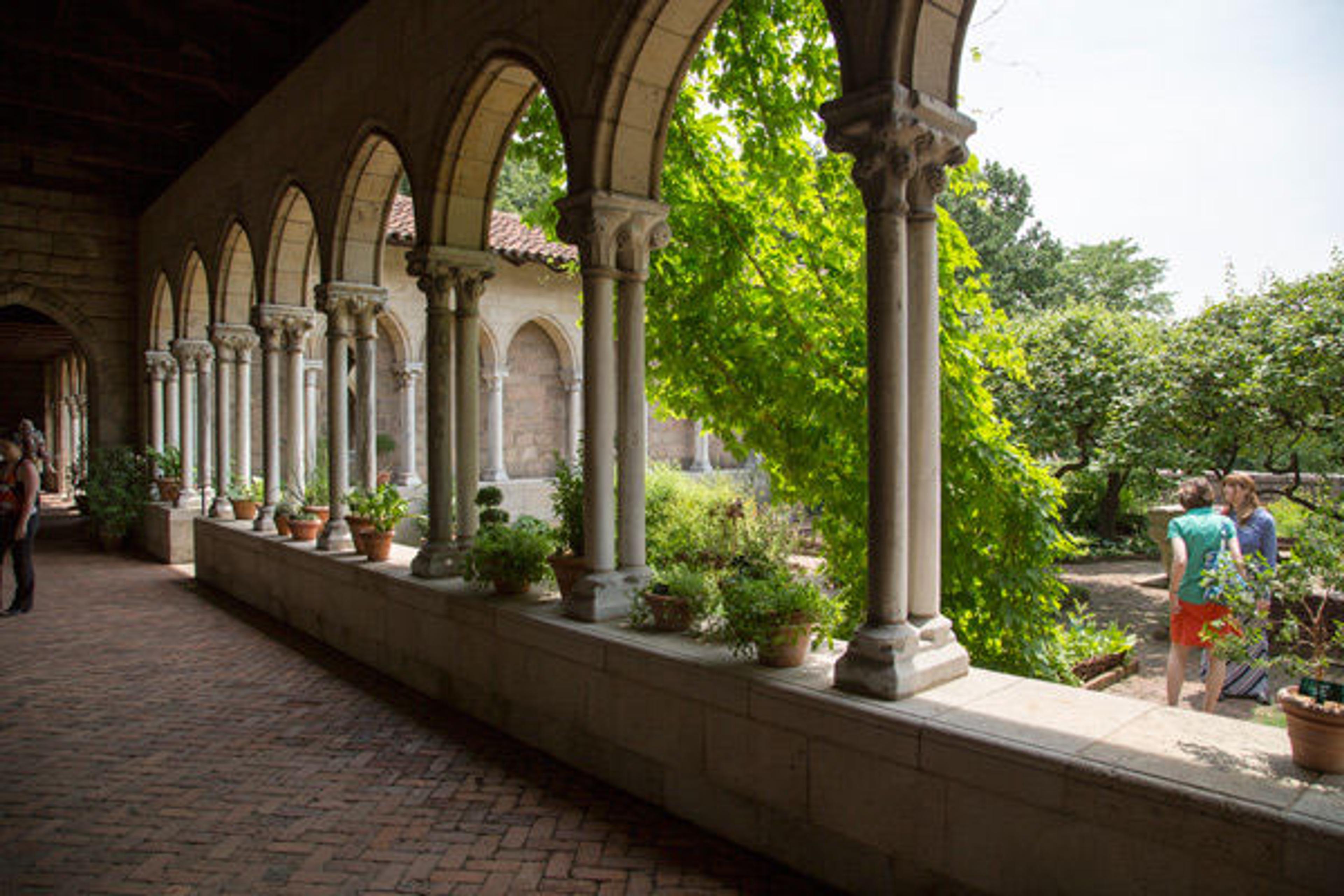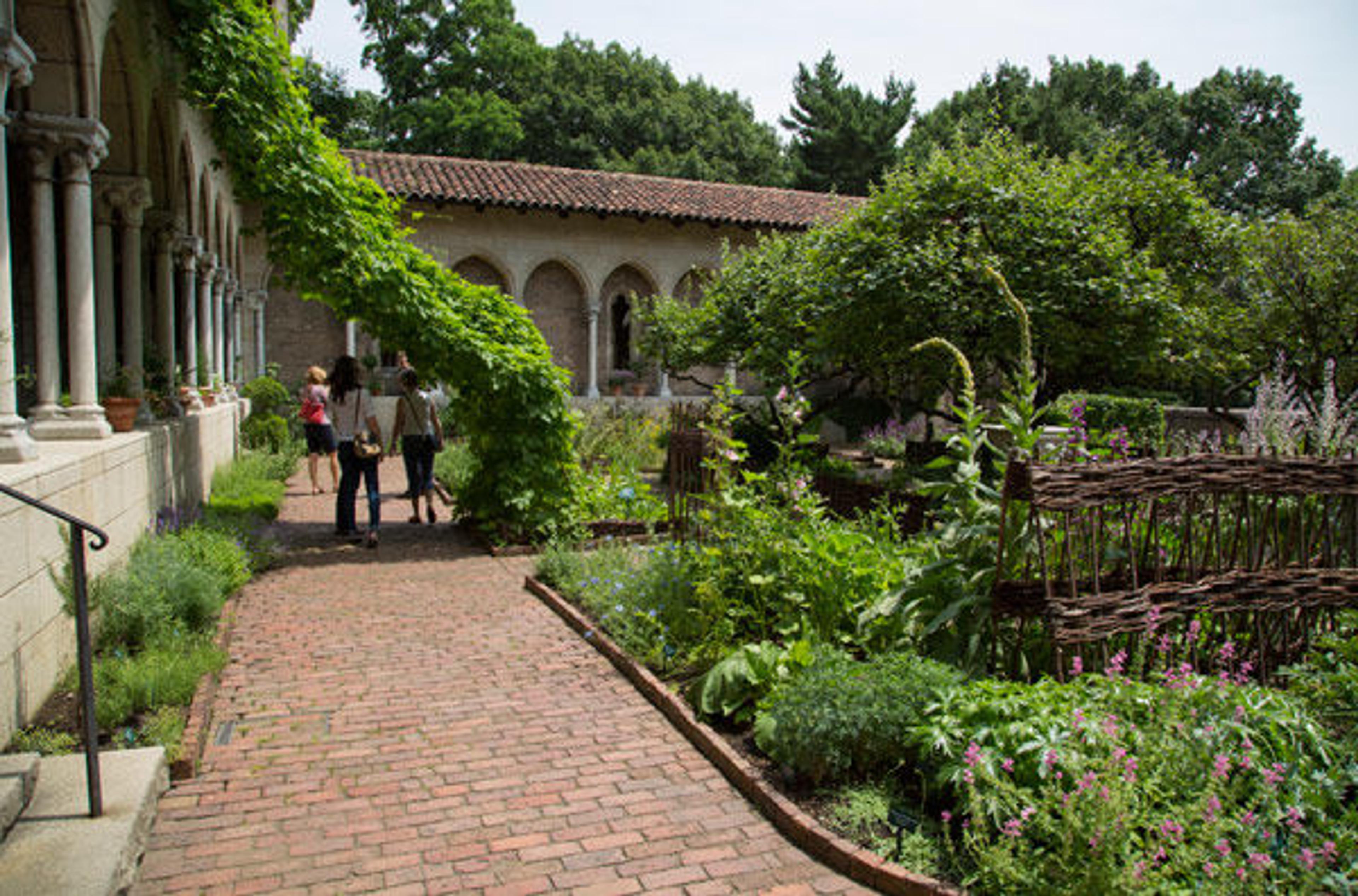
The shady arcade of Bonnefont Cloister at The Cloisters. Photograph by Andrew Winslow
A shady friend for torrid days
Is easier to find
Than one of higher temperature
For frigid hour of mind.
The vane a little to the east
Scares muslin souls away;
If broadcloth breasts are firmer
Than those of organdy,
Who is to blame? The weaver?
Ah! the bewildering thread!
The tapestries of paradise
So notelessly are made!
—Emily Dickinson
«Emily Dickinson was a passionate gardener as well as an accomplished poet, and nature provided her with a lifelong source of inspiration.» Although she addresses differences in psychological temperament in the first lines of the poem above, we invite you to enjoy a respite from the actual heat of summer in the gardens of The Cloisters.
The shady Bonnefont Cloister arcade provides a view of our medieval herb garden. A collection of potted plants on the parapet wall includes many plants that we do not have space to grow in the garden beds. Some of them, like the very pretty dittany of Crete (Origanum dictamnus) are Mediterranean species, brought inside for the winter (see "Right Dittany, White Dittany" on our former blog, The Medieval Garden Enclosed). Others, like the sentimental favorite, forget-me-not (Myosotis scorpioides), are common northern European plants (see "When This You See, Remember Me").

Hop bines climb toward the roofline in the Bonnefont Cloister herb garden. The garden bed in the right foreground contains plants used in medieval medicine, including self heal or all-heal (Prunella vulgaris), common mullein (Verbascum thapsus), common mallow or cheeses (Malva sylvestris), and hollyhock (Alcea rosea), all currently in bloom. Photograph by Andrew Winslow
Our horticulturists have modified the support system for the hop bines (Humulus lupulus) this year, gracefully providing a bit of shade in the garden (see Caleb Leech's most recent post, "Climbing in the Garden"). Hop had many uses in the Middle Ages, but we are most familiar with it because the flowers, or hops, remain an important ingredient in the brewing of beer (see "Welcome to the Beer Garden" on The Medieval Garden Enclosed). The gardens are in full summer bloom, beautiful in either the sun or storm of Dickinson's poem.